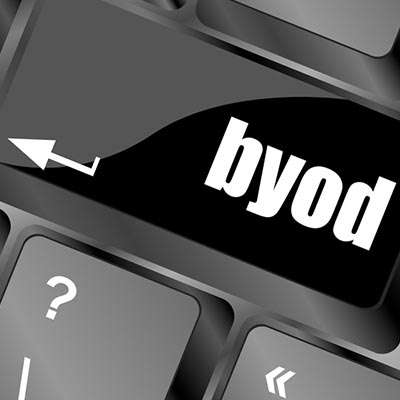Macro Systems Blog
The Pros and Cons of the Bring Your Own Device Policy
Bring Your Own Device is a popular trend in the modern business environment; it creates numerous opportunities for businesses to cut costs. But, this is only true if you implement a BYOD policy that your business can take advantage of. A BYOD can lead to considerable problems for unprepared businesses.
Listed below are some of the basic principles of BYOD. Basically, an employee utilizes their own personal device for work, instead of an employee being given a device by your business to use.
Why BYOD Has Become So Accepted
On paper, BYOD seems like the ideal solution. Organizations that take advantage of BYOD practices can save up to $350 a year per employee and using portable devices for work purposes can save employees about an hour per workday, as well as improve productivity by up to 33 percent. Other benefits include, but are not limited to, the following:
Access to Better Technology
You might have a laundry list of technology solutions you want to implement, but you’re at the mercy of your budget. You always run the risk of a new solution altering your operations in a negative way. While this might have an effect on your decision making for business technology, your employees have a different mindset, replacing devices as they want. It’s more likely that your employees will replace outdated technology, leading to happier and more productive employees overall.
Diminish Financial Toll on Businesses
Your technology acquisitions will be mostly driven by the budget behind them. For example: you might want to replace your workstations, but if the budget doesn’t permit for this, then it just simply can’t happen. Rather than hope your budget accommodates these changes, you can offer your employees the option of using their personal devices, freeing your organization from the responsibility of acquiring said technology. The expenses of BYOD are essentially limited to securing access to information and implementing it.
Employee Satisfaction
You might find that your businesses' technology just isn’t pleasant to work with. Forcing productivity is rarely effective, and aging workstations certainly aren’t going to make the process any easier when they have just bought a shiny new laptop. If you force employees to work using technology that doesn’t work properly, they will naturally push back. You circumvent this situation entirely by allowing to use their own devices.
The Potential Problems with BYOD
Loss of Focus
Compared to the amount of productivity applications on the app stores, there are numerous ways to get distracted by BYOD. While you can whitelist and blacklist applications on your company-owned devices, you don’t have too much control over devices your employees utilize.
Loss of Control
Losing control of devices is a recurring problem for businesses, especially with BYOD on the playing field. Policies can be implemented, but they require the employee’s consent, which they are probably not going to give. What happens if an employee leaves with company data on their device? What if they are careless with the way they access this information? All of this needs to be considered.
Compliance Shortcomings
How will your BYOD implementation interact with other parts of your business, namely compliance? Requirements put in place by laws like HIPAA and Dodd-Frank mean that IT administrators need to be especially cognizant of how data is being distributed to BYOD devices.
How Do You Leverage BYOD Securely?
The best way to make sure BYOD is being managed properly is to work with a managed service provider with professional IT technicians on staff who can help you navigate these muddy waters. To learn more, reach out to Macro Systems at 703-359-9211.





Comments